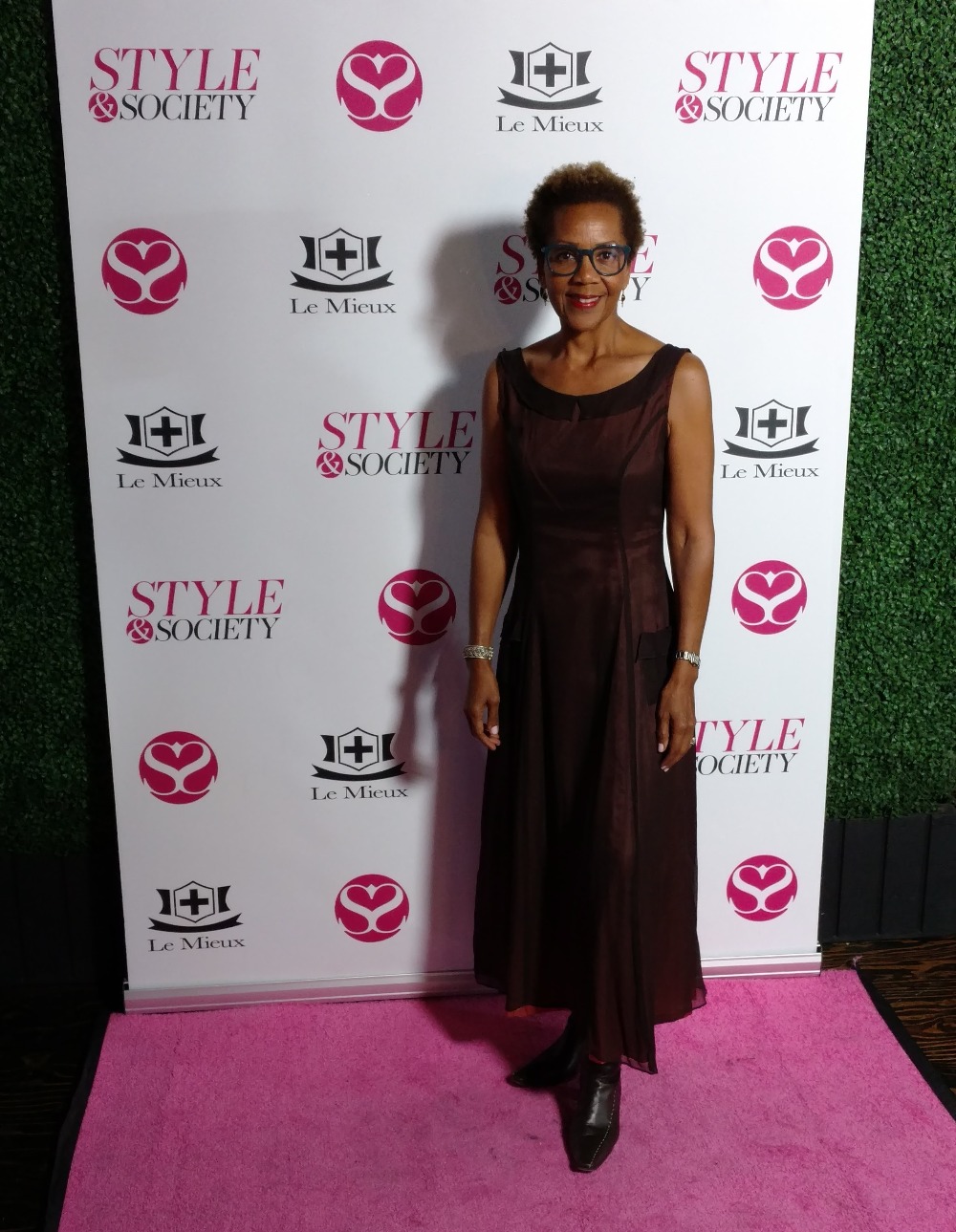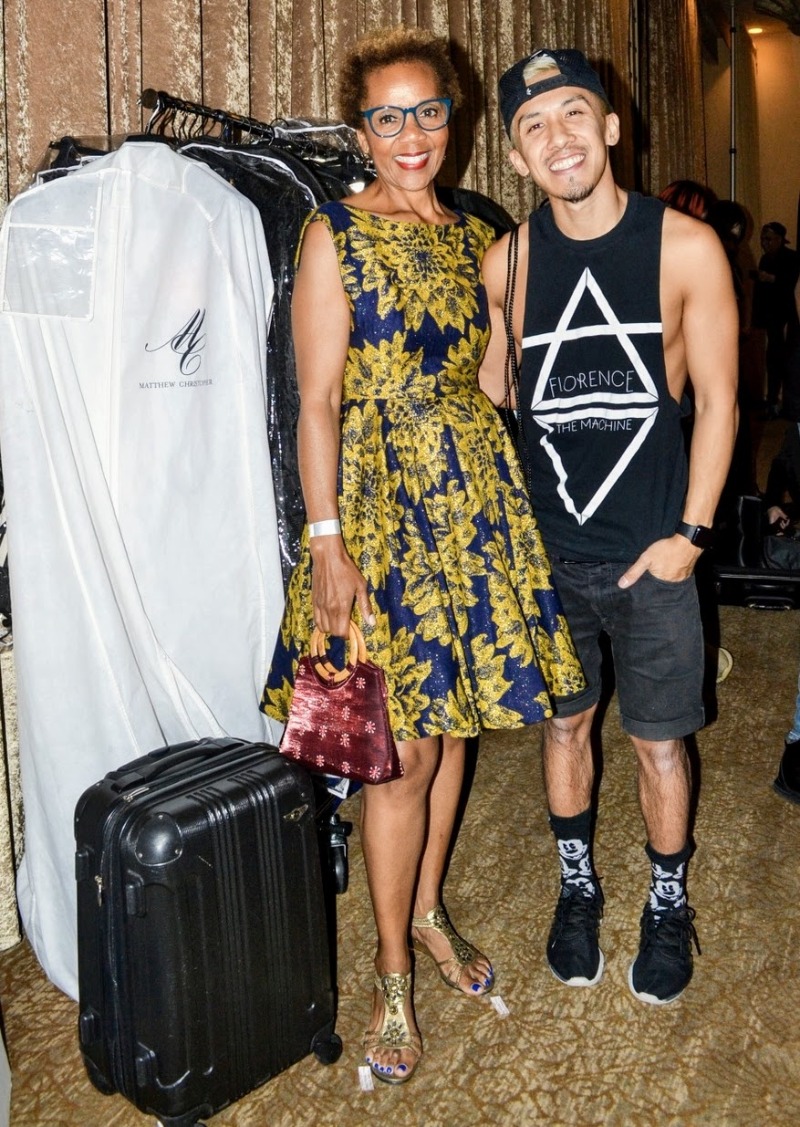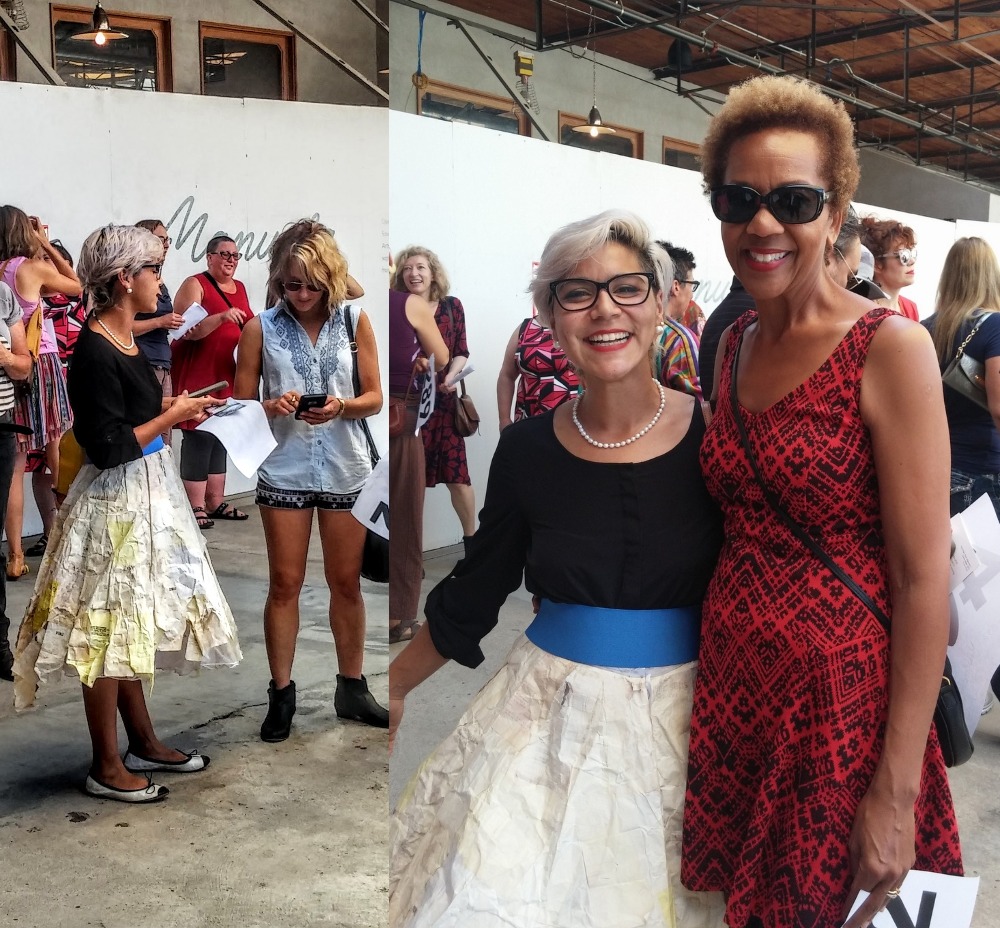Putting Fashion in Its Place, an Interview with Rhonda P. Hill

“The power of fashion lies in its ability to transform identity and culture.” – Rhonda P. Hill
There is a new generation of designers that are fed up with fast and cheap fashion, over the top runway shows dominated by luxury brands, and the industry's superficial characteristics. And the big dirty little secret of that industry is that it is polluting the environment. Clothing and textiles are one of the largest polluting industries on the planet, right up there with oil. This new generation of designers believes brand identity is nothing without purpose. They stand their ground on creativity, innovation, and building a collection with meaning. "They are a courageous breed of designers who are going against the commercialized trend of 'more is more' and giving artistic value, a cultural face, and environmental consciousness to fashion", says Rhonda P. Hill.
The most exciting of those designers will be featured at an exhibition at GraySpace Gallery, in the Funk Zone, Santa Barbara, created by Rhonda P. Hill, founder and creative director of EDGE.
Hill, an industry professional and contributor, is giving voice and exposure to this crop of fashion designers in ways that are unique and unprecedented. She sheds a light on this intelligent approach to expose the cultural, sustainable, and artistic significance of fashion through the work of independent designers across the globe.

What is EDGE?
RH - EDGE, the acronym for Emerging Designers Get Exposed, is an international platform advancing the field of fashion in artistic values, cultural significance, and sustainability through the exposure of emerging designers. Its website, EDGExpo.com, is a periodic digest capturing an intelligent perspective on fashion. It provides a magazine-style look at the paradigm shift from irresponsible, excessive production and consumption to one of environmental and ethical consciousness, cultural sensitivity, and purpose.
Why EDGE? What motivated you to develop this platform?
RH - I see today's fashion industry as a mega commercial machine that creates seasonal trends with a frenzied frequent flow of merchandise that is unprecedented. Some stores flow new goods every week. Designers and the creative teams are burned out and are producing like robots. What we see in the stores is the result of that - too much, too often, too much of the same, that lacks quality and purpose. As an industry, we have dramatically moved away from an artistic and conscious practice. The fashion industry, at large, has become a high speed, disposable garment driven industry fueled by marketing and hype. This unsustainable roller coaster has no end in sight.
With that I saw a segment of the business that goes against this grain, and that is this 'now' generation of contemporary, up and coming designers. I feel that they have a voice and are under-exposed. Consumers are abandoning the same old stuff. They vote with their wallets and that is why there is a lot of clearance merchandise, season after season. This new generation of fashion designers are resisting the system and transforming the industry in so many ways. I want their voices to be heard, their amazing stories to be told, and their collections to be shown to both the public and industry professionals.
Did your experience and professional background help you in developing this platform?
RH - Absolutely! My background is fashion merchandising and marketing. My leadership role in the companies I worked for – VP, Disney Consumer Products; Product Development, Levi Strauss & Co.; Buyer, Macy's; Director of Marketing, adidas accessories – was to create, lead, and implement products from concept to in-store. I was directing the entire process from design, to sourcing, to sell in and sell through in the store[s]. I understand the complexity of bringing a profitable product to life. It is not easy and you really have to know the profile of your consumer, the psychology of their buying behavior, and be steps ahead of them on what they will want in the future.
Wow your background reveals a depth of industry experience. How did you build your infrastructure of connections and resources to feed this platform?
RH - By leveraging and building on my experience and contacts. EDGE fosters a global network of fashion industry professionals, educators, and the arts. For those of us in the industry who support the same principles and philosophy for where the industry should be headed, we collaborate and engage with each other. We share our resources, support, and promote our efforts. An example of this is my relationship with the Art Institute of California. I have judged their annual student fashion show and usually publish an editorial piece; review the graduating senior’s portfolio show; and speak at their fashion symposiums. Students and those new to the business use the website for educational purposes along with business tips as they navigate through this complex industry. The feedback that I get is that the designers get the most benefit from the designer interviews. They are reading and learning first-hand what are some of the pitfalls, challenges and what really does work in this business.
Another example is connecting with the material suppliers. They, too, have difficulty in communicating what they offer to their audience, the design group. From a recent trip to the International Textile Show in Los Angeles, I gained enough connections and information to publish content on how advanced the textile industry is in reducing the carbon footprint while implementing ethical business practices. Several articles came from this and they are among the most read education articles.
Fostering this network comes with the EDGE mission. As an industry professional and insider and because of my reputation I am entrenched in business of fashion. I am invited to Fashion Week; trade shows; to participate or facilitate panel discussions. I attend museum and art gallery fashion/costume exhibitions, usually for press preview or opening receptions, and through this process continue to build a network.

There is a lot of information on www.EDGExpo.com; help us break down the website and find what is on it.
RH - The content or menu items provide a focused selection of articles on industry information and news; industry resources; fashion exhibitions and shows; the arts and fashion; education and business tips; and sustainable fashion.
The EDGE talks, the industry professional's interviews that I conduct, are the centerpiece, which I am very proud of. Gaining first-hand information from my interviews with designers, retailers, and other industry 'behind-the-scenes' types such as factory and textile-mill owners is quite valuable.
The title names help to brand the EDGE platform and EDGExpo.com website. For example, the designer interviews are in the category/menu item titled EDGE Radar. These are featured designers and industry professionals that are on the radar – they are up-and-coming in their field. When you click on Sustainable EDGE, you will see articles on market/intelligence information specific to sustainable fashion, and interviews with those in the industry that are incorporating conscious fashion in their business.
Let’s talk sustainable fashion. You are a big advocate for sustainable fashion. What does that mean to you and to this platform?
RH - It’s a huge topic with many facets. . .this could be an interview all on its own.
Sustainable fashion can be defined as apparel, accessories, and shoes that are manufactured, marketed, and used in the most sustainable manner possible, with the focus on environmental and socio-economic aspects. The fashion industry is a resource-intensive industry. The clothing and textile industry is one of the largest polluters in the world. My personal interest is in those brands that focus on mitigating polluting the earth by operating with a zero waste, circular economy approach. I have submersed myself in the sustainable conversation; gathering data, doing my own research through interviews of key players throughout the industry. This is all documented on the website. What has touched me the most through this process is how many of the designers in the EDGE network are empowering a sustainable community - keeping it local.
Yes, I have a lot of passion around this subject. At the rate we consume, we buy clothes to throw away. I am a believer of investing in fashion - buying fewer pieces of quality with artistic value and purpose; pieces that you never tire of and take pride to hand down. It’s OK to have a timeless wardrobe that doesn’t need a monthly injection of new because Vogue tells us to.
Recycle, re-use, and re-purpose. The ones that are really on the leading edge of fashion are those that are recycling and re-purposing what is already out there. I call it “street recycling”. They are doing exciting things be recombining the old stuff. From my former life in this business, I was paid to photograph what people were wearing, not on ‘main’ street, but the urban style that is born on the street. I documented those looks from the streets of London, New York, Tokyo, and Shanghai, to name a few. I could spend hours talking about sustainable fashion - it is dear to my heart.

I feel your passion!
Besides the exposure on the website, what methods do the designers use to communicate their brand and what does EDGE do in the non-digital arena?
RH - Designers are finding that retail trunk shows are a good method for that one on one contact with their consumer. Other methods such as trade shows and fashion week shows can be very costly and financially difficult for a startup brand.
Contrary to the perception of glamour and sizzle, many designers tell me that fashion shows are not productive for them. The ten to twenty minute catwalk goes by so fast and, from their backstage view, they miss it all. What they would rather have is a more intimate setting, a catalyst for dialogue and feedback with both the public and industry professionals.
In launching the EDGE platform, I took a survey to find out what designers want in communicating their brand/their designs. The top response on presenting their collections is what I’ve always been a proponent of and that is exhibiting fashion in galleries and museums. I see these venues as a new era of exposing fashion design as it sets a tone for an intimate setting, engagement, and dialogue. However, I caution that the gallery and museum exposure should meet strict criteria of design excellence and its contribution to art.
So in a non-digital arena, I am laying groundwork by creating fashion exhibitions at galleries and museums. The first exhibit in this region is at GraySpace Gallery, in the Funk Zone, Santa Barbara.
How common is this?
RH - It's quite rare actually – it is not the industry norm. An unknown fact, although public information, is that over 2.2 million people visited the Metropolitan Museum of Art's [New York] top 3 fashion exhibitions. That's an audience of at least 2.2 million who are engaged in this type of cultural experience. I think we need to shake things up on how we present meaningful fashion to the public.
So you see fashion design as art?
RH - Yes, I do. Fashion and culture are intertwined and just like art, good work deserves to be seen.
In one word, what is your vision for the future of fashion?
RH - Slow.
What's on the horizon, a book?
RH - Down the road. . . but as I mentioned earlier, a gallery exhibition at GraySpace Gallery in Santa Barbara’s art district, the Funk Zone, is on the horizon. I’ve created an exhibition titled Blurred Boundaries: Fashion as an Art. It exhibits the work of 4 emerging designers, Tingyue Jiang, Alena Kalana, Susan Tancer and Hera Zhou, who blur the distinction between art and fashion. This phase of the EDGE project is exciting! My hope is that the viewer will enjoy looking at fashion through a cultural lens and that the exhibit inspires new inquiry of fashion as an art.
Describe yourself in 5 words.
RH - confident, compassionate, passionate, resourceful, and smart
Click here for more information about Blurred Boundries: Fashion as an Art

